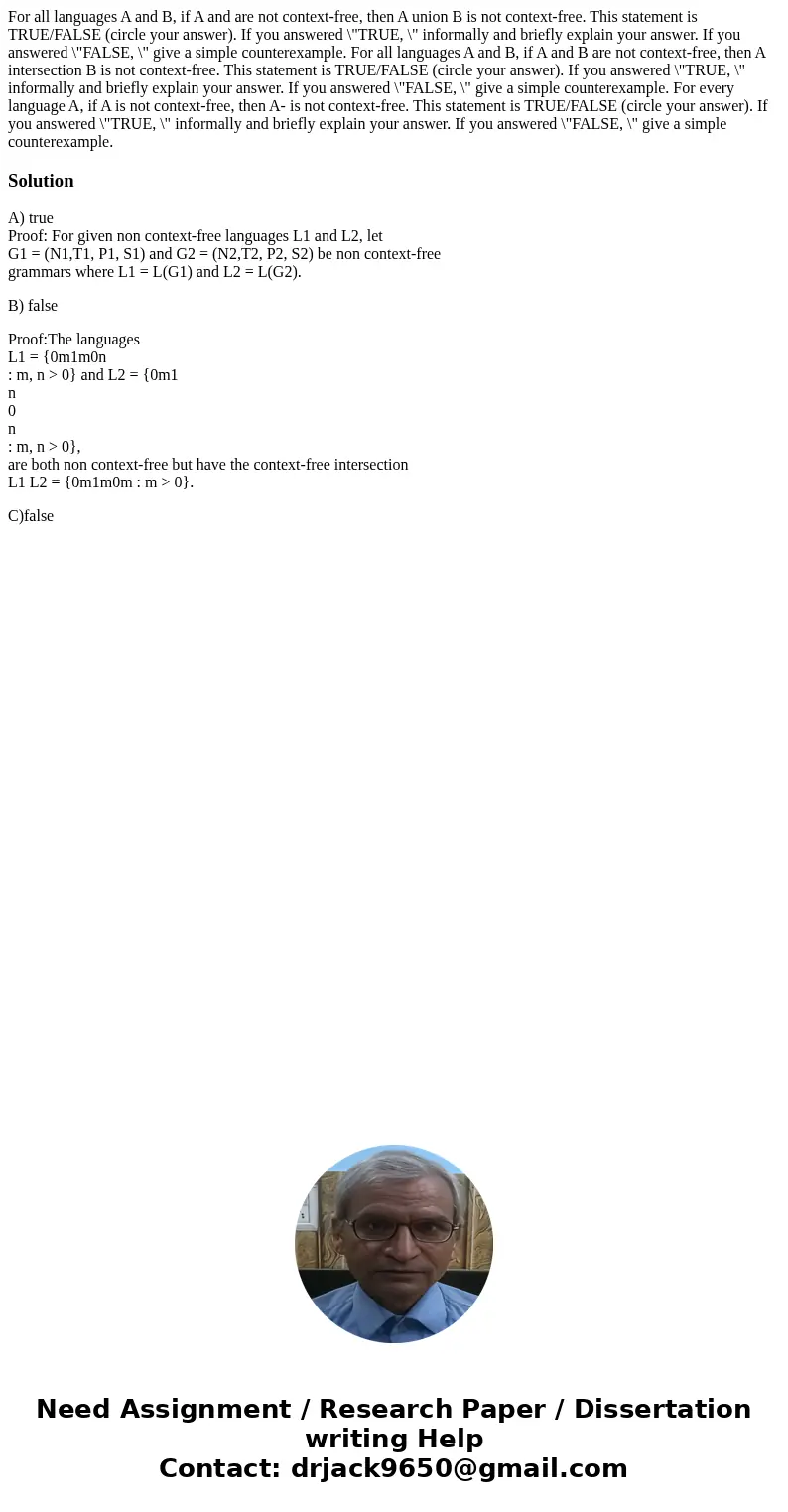For all languages A and B if A and are not contextfree then
For all languages A and B, if A and are not context-free, then A union B is not context-free. This statement is TRUE/FALSE (circle your answer). If you answered \"TRUE, \" informally and briefly explain your answer. If you answered \"FALSE, \" give a simple counterexample. For all languages A and B, if A and B are not context-free, then A intersection B is not context-free. This statement is TRUE/FALSE (circle your answer). If you answered \"TRUE, \" informally and briefly explain your answer. If you answered \"FALSE, \" give a simple counterexample. For every language A, if A is not context-free, then A- is not context-free. This statement is TRUE/FALSE (circle your answer). If you answered \"TRUE, \" informally and briefly explain your answer. If you answered \"FALSE, \" give a simple counterexample.
Solution
A) true
Proof: For given non context-free languages L1 and L2, let
G1 = (N1,T1, P1, S1) and G2 = (N2,T2, P2, S2) be non context-free
grammars where L1 = L(G1) and L2 = L(G2).
B) false
Proof:The languages
L1 = {0m1m0n
: m, n > 0} and L2 = {0m1
n
0
n
: m, n > 0},
are both non context-free but have the context-free intersection
L1 L2 = {0m1m0m : m > 0}.
C)false

 Homework Sourse
Homework Sourse